Summary of climate disasters on the planet from June 25 to July 1, 2025
Giant hail in Italy, record heat and wildfires in Europe, snow in the Chilean desert… all this is just part of what happened during the week of June 25 to July 1, 2025. But the main threat is hidden deep inside the planet’s interior. Today you will learn why Siberia could become the cause of a planet-wide disaster.
France
On June 25, France was struck by extreme storms with heavy rain, thunderstorms, large hail, and even a tornado.
Experts classified the phenomenon as a derecho.
Derecho is an extensive and long-lived storm with gusts of at least 93 km/h (58 mph), accompanied by fast-moving thunderstorms, causing straight-line destruction over 400 km (250 mi).
An orange alert level was declared in 44 departments of the country.
Over the night, firefighters carried out 2,500 rescue operations.
Rail traffic was disrupted nationwide. In several regions, wind gusts exceeded 130 km/h (81 mph), breaking historical records.
For example, in the commune of Montbeugny, Allier department, wind speeds reached 135 km/h (84 mph), and in Bessey-en-Chaume, Côte-d'Or department—134 km/h (83 mph).
Approximately 110,000 homes were left without electricity.
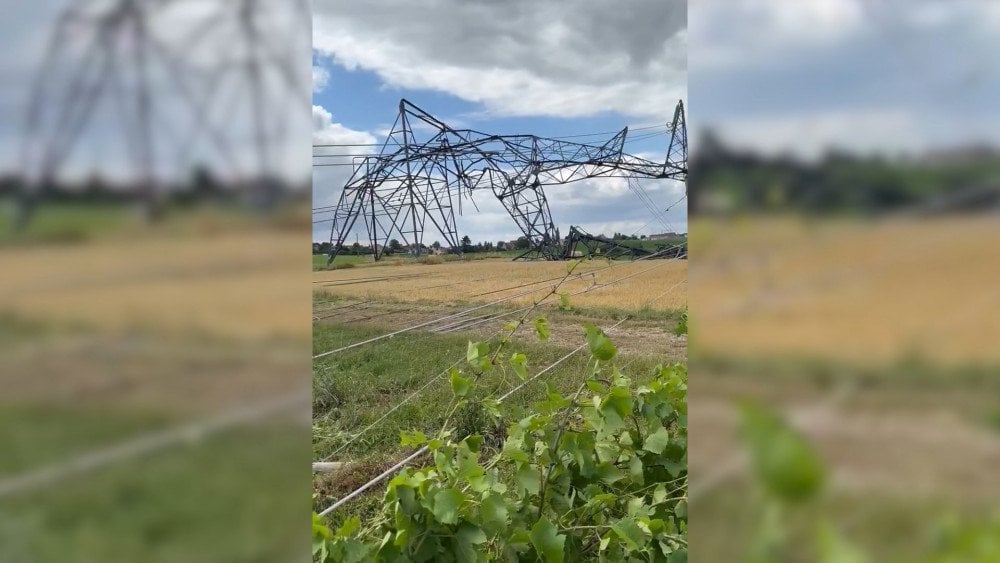
High winds damaged a high-voltage transmission tower, France
During the storm, falling trees killed two people in the Tarn-et-Garonne and Mayenne departments.
Another 17 people were injured during the violent storm, one of whom is in critical condition.
In Normandy, the powerful wind damaged nearly 3,500 ha (8,650 acres) of trees in the Forest of Lyons, the largest in the region (total area—10,700 ha or 26,400 acres).
In mere minutes, the storm completely destroyed the Church of Saint Peter in the commune of Vallais, which had just been restored after 35 years of renovation.
In Paris, the downpour was so intense that visibility dropped to less than 50 m (164 ft). Streets in the southern part of the city were flooded, severely hindering traffic. Several metro stations were closed. Sessions in the National Assembly were temporarily suspended due to water leaks.

Flooded streets of Paris after heavy downpours, France
A fallen tree crushed a car with a husband and wife inside. The vehicle was damaged beyond repair, but the couple miraculously survived.
Italy
On June 26, powerful storms hit northern Italy.
In the commune of Sacile and other towns in the Friuli region, giant hail fell, with some hailstones exceeding 10 cm (4 in) in diameter. This became one of the most extreme hail events in Europe in recent years.

Abnormally large hail fell in Italy
The severe weather struck suddenly, catching residents off guard. Significant damage was caused to buildings and vehicles. Traffic on some roads was disrupted due to ice accumulation. Vineyards and orchards were also severely affected. The storm was accompanied by tens of thousands of lightning strikes.
Heatwave and Wildfires in Europe
A wave of heat anomalous for June engulfed Europe. In some areas, temperatures were 5–10°C (9–18°F) above average for this time of year. In several countries, national June records were set.
In Spain, on the 28th, the municipality of El Granado in Huelva Province recorded +46°C (114.8°F).
And in Portugal on June 29, in the town of Mora, temperatures reached a staggering +46.6°C (115.9°F). On the same day, thermometers exceeded +44°C (111.2°F) at ten weather stations across the country.
On June 26, national monthly records were also set in Austria and Slovenia—38.3°C (100.9°F) and 38.4°C (101.1°F), respectively.
In Italy, the Ministry of Health issued red alerts for extreme heat in 16 cities, including Rome, Milan, Venice, Florence, and Naples.
France’s meteorological service declared an orange alert in a record 84 out of 101 departments.
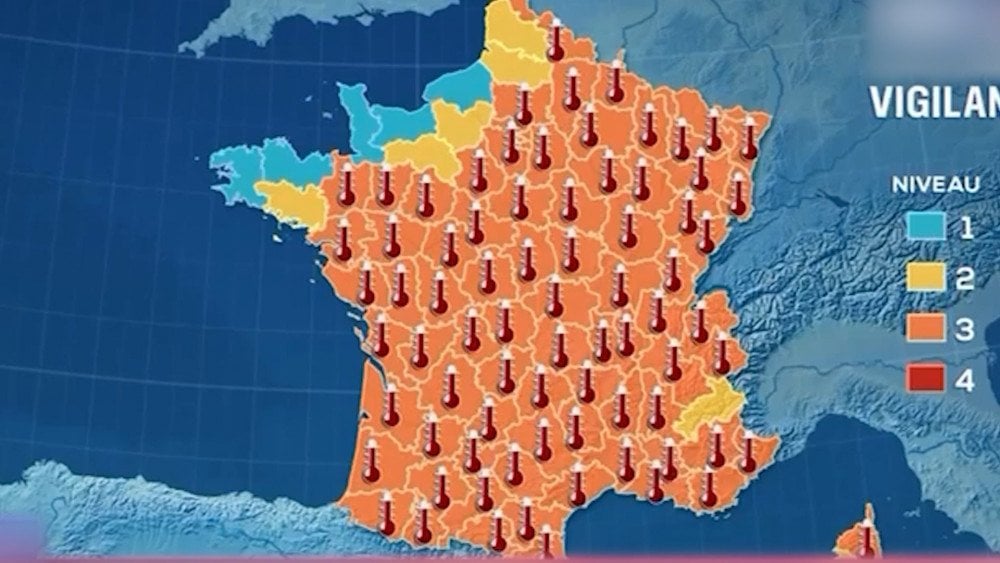
Record heat in Europe
In the southwest of the country, thermometers exceeded +40°C (104°F). In the Aude department, wildfires broke out, burning 400 ha (988 acres) and forcing the evacuation of a campsite and an abbey.
In Germany, the heatwave lowered water levels in the Rhine River, disrupting shipping and raising transportation costs for cargo owners. Due to increased demand for cooling, electricity prices in Germany and France soared.
In the capital of Bosnia and Herzegovina, Sarajevo, for the first time in 124 years, temperatures reached +38.8°C (101.8°F)—a new all-time June record set on the 26th.
In the northwest of the country, on the railway section between Čelinac and Vrbanja, rail tracks deformed due to the intense heat, temporarily halting train traffic.
June became the driest on record in the country. In some regions, not a single drop of rain fell during the entire month.
Amid these natural anomalies, several large wildfires broke out in the canton of West Herzegovina, threatening residential areas and infrastructure. One of them began on the night of June 28 in the municipality of Ljubuški. Strong, shifting winds hindered firefighting efforts and made the use of aircraft and drones impossible. The fire was brought under control only a week later.
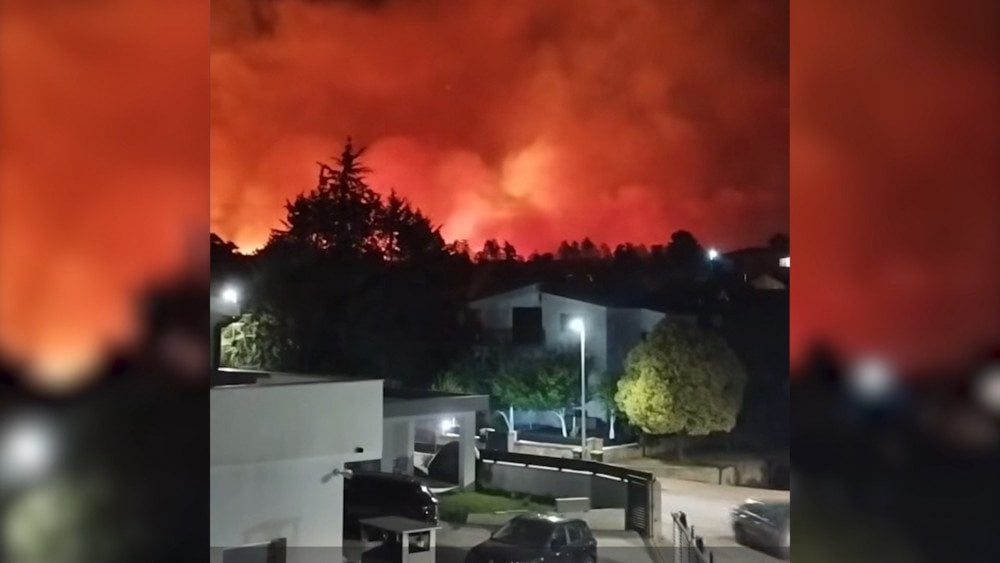
A major wildfire threatens residential areas in Bosnia and Herzegovina
On June 26 in Greece, just 40 km (25 mi) from Athens, a large fire broke out in the town of Palaia Fokaia. Fueled by 40-degree heat and strong gusty winds, the flames quickly spread to nearby forests and tourist resorts.
Preliminary data indicates that at least 20 buildings were destroyed by the fire. Evacuation orders were issued for five districts, including the area near the ancient Temple of Poseidon, and coastal roads were closed. Boats were on standby near the shore in case sea evacuation was needed.
In Turkey, too, extreme heat and strong winds sparked hundreds of fires at the end of June—affecting the provinces of Izmir, Hatay, Manisa, Muğla, Adana, Antalya, Mardin, Mersin, Osmaniye, and Aydın.
In Izmir Province, flames reached resort areas and the ruins of ancient Ephesus—one of the country’s most famous archaeological sites. In the districts of Menderes and Seferihisar, residential neighborhoods were engulfed with fire, damaging homes and vehicles. More than 42,000 people were evacuated from streets surrounded by fire.
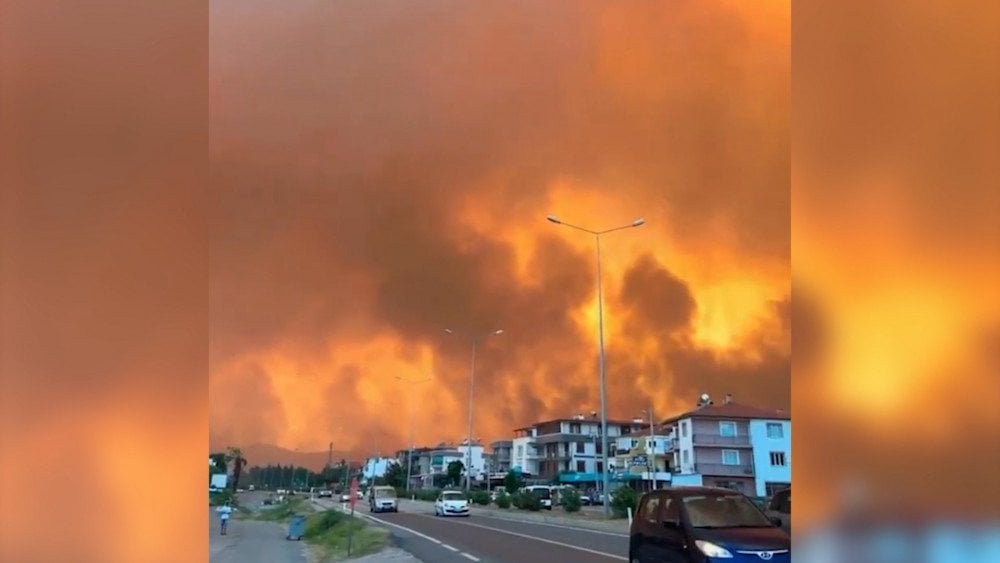
Turkey in flames: the disaster approaches residential districts
As of July 1, 46 people had been injured by the fires and hospitalized, one of them in critical condition.
In the city of Izmir, flames spread to a car dealership and an appliance warehouse—both were completely destroyed. The province’s main airport, Adnan Menderes, was temporarily shut down on June 29, causing flight delays for nearly a full day.
More than 1,000 firefighters, helicopters, and planes were deployed to fight the fires.
Around the world, heat, drought, winds, and deep degassing are intensifying. All of this creates ideal conditions for wildfires. They are starting earlier than usual, spreading rapidly, and are difficult to contain.
In Europe, from January 1 to June 30, 2025, a total of 196,407 ha (485,277 acres) burned—2.39 times more than the 2006–2024 average for the same period, which stood at 82,144 ha (202,978 acres).
Pakistan
On June 27, a tragic event occurred involving a group of tourists in Pakistan’s Khyber Pakhtunkhwa Province, on the Swat River, as heavy downpours struck the northern part of the country. While the adults were resting on the riverbank, the children played in shallow water and took photos. But suddenly, a rush of rainwater from the mountains swept the children away in a powerful torrent. The flow was so intense it felt like a dam had burst. The adults rushed to help but became trapped in the water themselves. For over an hour, they held on atop a narrow rise in the middle of the river, waiting for rescue. Tragically, they too were swept away by the raging current.

Sudden flood caught tourists by surprise: they try to survive on a small patch of land, Khyber Pakhtunkhwa Province, Pakistan
At least nine people, including children, died. Four more are missing, and four others were rescued.
Authorities stated that they had issued advance warnings about possible flooding and had prohibited to approach water—but many people ignored the advisories.
Heavy rains and flash floods in Pakistan claimed the lives of 45 people over the course of just a few days.
Chile
On June 25, snowfall occurred in Chile’s Atacama Desert, surprising local residents, as this is one of the driest regions in the world and precipitation here is extremely rare.
A serious incident occurred in the Antofagasta Region, in the commune of San Pedro de Atacama, at an altitude of over 4,200 m (13,780 ft).
At the 80th kilometer of international route CH-27, on the way to Paso de Jama, accumulated snow—reaching a depth of 10 cm (4 in)—caused a truck to skid and block traffic in both directions.
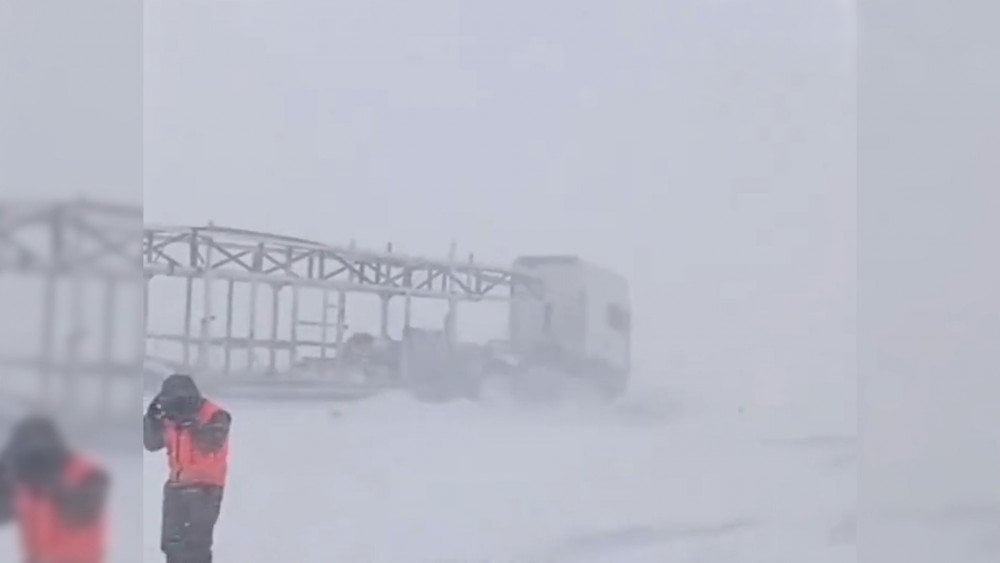
Anomalous event: snowfall in the Atacama Desert, Chile
About 40 people, including elderly people and children, were trapped. They spent the night in their vehicles in temperatures as low as –7°C (19.4°F), while rescuers struggled to reach them along snow-covered, barely passable roads.
It’s worth noting that the average minimum temperature in the region during June is +2°C (35.6°F).
On other sections of the highway, drivers of several trucks were forced to remain in the freezing cold on the roadside for three to four days.
China
At the end of June, Rongjiang County in Guizhou Province was flooded twice within four days, from June 24 to June 28.
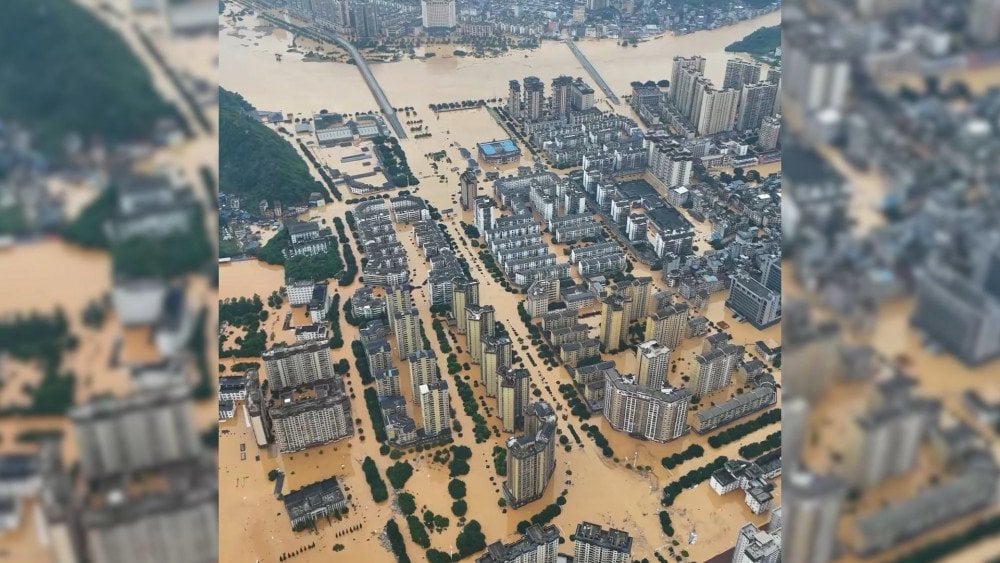
Disastrous flood inundated Rongjiang County, Guizhou Province, China
According to experts, this was the most severe flood in the region’s recorded history.
The first strike of the disaster claimed the lives of 6 people, and over 100,000 were affected. More than 50,000 residents had to be evacuated.
Rapid torrents flooded streets and caused catastrophic damage to infrastructure. Muddy water surged into the county’s largest shopping center.
Shop owners said the water rose too quickly for them to save anything—they had to evacuate immediately. One of them admitted he was stunned when he returned to his store: everything had been destroyed in a single night.
On June 28, a second wave of flooding struck Rongjiang County. The disaster once again forced authorities to urgently evacuate 11,992 households—a total of 41,574 people.
Residents who had just cleared mud and debris from their homes and shops didn’t expect to repeat the cleanup all over again.

Chaos in the streets: mud and debris after the severe flooding in Rongjiang County, Guizhou Province, China
A local landmark—the “Village Super League” football field—was also damaged again by the floodwaters.
Russia
The climate and geodynamic situation in the area of the Siberian magmatic plume continues to deteriorate. Signs of magma uplift are becoming increasingly apparent.
More details about the threat of the Siberian magmatic plume can be found in the report “On the threat of a magma plume eruption in Siberiaand strategies for addressing the issue.”
On June 28, a 5.1 magnitude earthquake struck northern Yakutia. Its epicenter was about 280 km (174 mi) from the settlement of Chokurdakh, and the focus lay at a depth of approximately 10 km (6.2 mi).
Experts emphasize that in recent years, a marked increase in seismic activity has been observed in the northern regions of Yakutia.
Notably, this powerful earthquake was registered by international seismic services, but federal Russian didn’t report it at all.
That same morning, June 28, a massive ground collapse occurred in the city of Norilsk, Krasnoyarsk Krai, covering an area of 132 m² (1,421 ft²). A pit 25 m (82 ft) deep swallowed several garages and a service trailer where a female security guard was located. Four days later, her fate was still unknown. Rescue efforts were complicated by rising groundwater and the risk of further collapse.
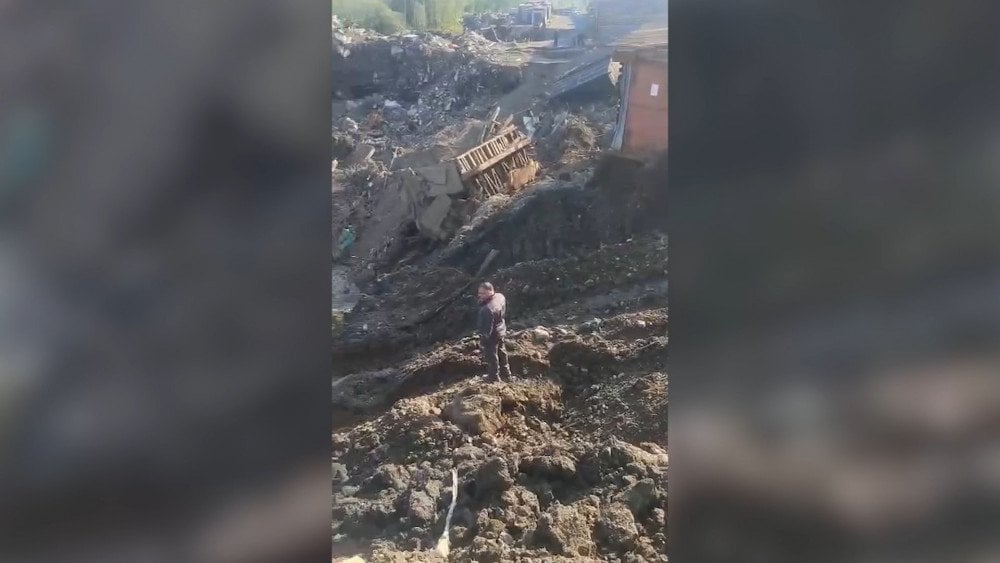
Ground collapse in Norilsk: a 25 m deep pit swallowed garages and a trailer, Krasnoyarsk Krai, Russia
According to the Ministry of Emergency Situations, the cause of the ground collapse was thawing permafrost.
This is already the second such incident in Norilsk in recent months. In April, a massive sinkhole formed there—about 500 m² (5,382 ft²) in area and over 7 m (23 ft) deep.
On June 30, a powerful thunderstorm struck the northern part of Krasnoyarsk Krai. In the cities of Norilsk and Dudinka, torrential rains came with lightning and squally winds.
In just minutes, streets turned into raging streams that flooded roads and even the entrances of residential buildings. The storm was accompanied by large hail, up to 4 cm (1.6 in) in size, which damaged numerous vehicles. Longtime residents said they couldn’t recall weather like this, and it’s no wonder—the cold air and harsh Arctic climate usually prevent such violent storms from forming.
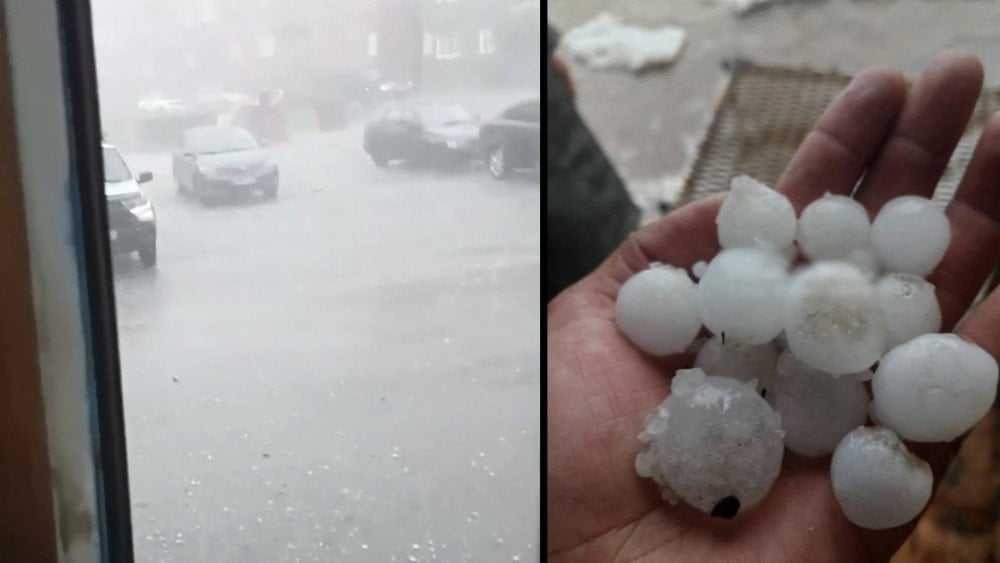
Large hail fell in Krasnoyarsk Krai, Russia
Everything you’ve read in this article isn’t just a series of unrelated disasters. These are signs of deep, ongoing processes within the Earth’s system—and the most dangerous of them is brewing in Siberia, where unusual earthquakes, massive ground collapses, and other anomalies all point to the reactivation of one of the planet’s largest magma plumes.
Some 250 million years ago, a massive eruption from this plume created the Siberian Traps and triggered the Great Permian Extinction—wiping out most life on Earth.
Today, we are witnessing similar processes once again. The region of magmatic flow beneath Siberia is already as large as Australia. And this isn’t just a local problem—it’s a planetary threat. If the plume breaches the surface, the planet could become almost entirely uninhabitable.
However, there is a solution: planned degassing. Controlled release of gases and lava from deep within the Earth could not only eliminate the risk of a catastrophic eruption but also reduce internal pressure in the planet’s magmatic system. That, in turn, could help prevent devastating earthquakes—like those that recently killed thousands in Türkiye, Myanmar, and other countries—and even help stabilize the global climate.
It seems that this should be the number one topic of global concern. But the world remains largely silent—especially in Russia. Why? Because if people knew the truth about the disaster forming beneath their feet, they would start demanding answers, evacuations, and real action. And this threatens the interests of those who are used to controlling this territory and its resources.
That’s why the topic of the Siberian plume is being silenced, ridiculed, and discredited.
What is the way out? Speak up! We must tell people openly about this problem so everyone knows about it. We must wake the world up. We must demand action from those in power.
If we stay silent today—tomorrow may never come for us.
You can watch the video version of this article here:
Leave a comment